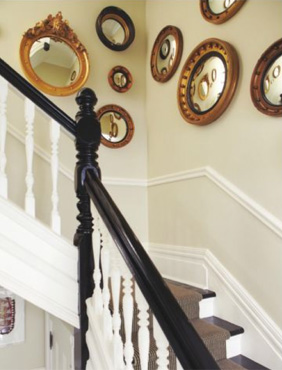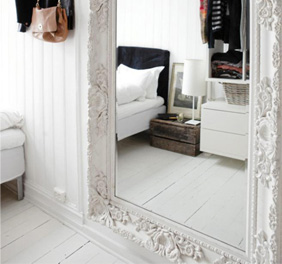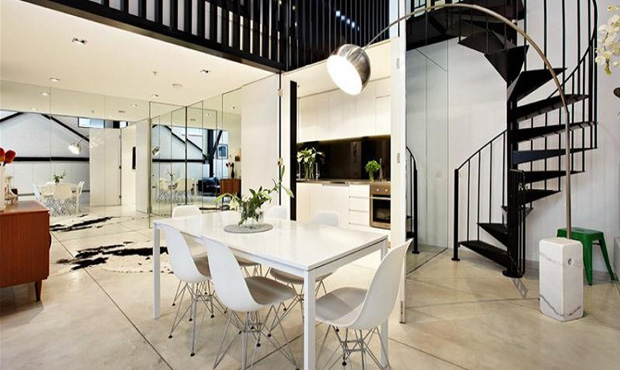Using Mirrors in A Room By Interior Designer Linda Levene
There are so many beautiful mirrors with stunning frames around at the moment in all shapes and sizes, but they don’t just have to be solely decorative they’re also a very powerful tool in helping to create an illusion and potentially transform the atmosphere and proportion of your room.
If your room has a problem – too narrow, too dark, or too small the chances are that a mirror can help bring it together. Used cleverly, it can accentuate the positive and minimize the negative.
A dark room with little light can be transformed by a well-placed, bouncing light around, and if used skillfully, the effect will look natural, and no one will be any the wiser that an illusion has taken place.
The same goes for small rooms. Mirroring portions of the room, often placing the mirrors to the sides and therefore not in direct view so you don’t see yourself, can give the illusion that the room continues beyond its real boundaries and, therefore, appears bigger.
Well placed mirrors
 A room with a small window and a good view, with the help of a well placed mirror, can be transformed. By placing a mirror opposite the window the view will be brought into the room changing the whole feeling and atmosphere dramatically. The room will not only seem brighter but will also feel airier.
A room with a small window and a good view, with the help of a well placed mirror, can be transformed. By placing a mirror opposite the window the view will be brought into the room changing the whole feeling and atmosphere dramatically. The room will not only seem brighter but will also feel airier.
Some words of caution though, remember everything will be multiplied good and bad, so always consider what your mirror is reflecting. The reflection will ultimately guide you as to where you should place your mirror.
Don’t place a mirror opposite a door unless you want your environment to seem busier than it really is as foot traffic will be visually multiplied. Also, beware of reflected light bouncing off the mirror, you must take care that the mirror doesn’t bounce back direct sunlight or the occupants of the room will be blinded. It’s a good idea to place your mirror where you think it should go and check it as the sun moves around throughout the day before finally deciding on a position to do so.
The other trick to consider when creating an illusion is always to make sure that you position your mirror so that it doesn’t catch your reflection and thereby spoil the effect you’re trying to create.
Rooms without natural light can also benefit from well-placed mirrors. Placing a lamp in front of a mirror diffuses the light through the room, creating an effect not unlike light from a window.
The same can also be done with gardens to give the illusion of extra space. Once again, it’s about blurring the boundaries and increasing the planting and greenery.
Creating the right effect
 There is a skill in creating the right effect; however, this is quickly achieved by first working out what it is that you want to achieve and then by placing your mirror in different places until the effect has been created.
There is a skill in creating the right effect; however, this is quickly achieved by first working out what it is that you want to achieve and then by placing your mirror in different places until the effect has been created.
For a purely decorative effect try hanging multiple mirrors on a wall, they could be small hand mirrors as a group or bigger more dramatic ones. As with pictures group them into themes and stories. Always consider their size and proportion and think about how this is going to affect the feel of the room. Used wisely and carefully mirrors are a great investment in your home, not only do they look good but they can offer you double the value with the effects they can create.
Mirroring one side of the room gives the illusion that the room continues. Different sizes of mirrors up a flight of stairs add drama and reflect light. A large framed mirror adds visual interest to this all white room, making it brighter and lighter.
Guest Post by: Linda Levene
Linda Levene is an Interior designer in London specialising in residential and commercial projects. For more information visit www.ll-i.co.uk.

